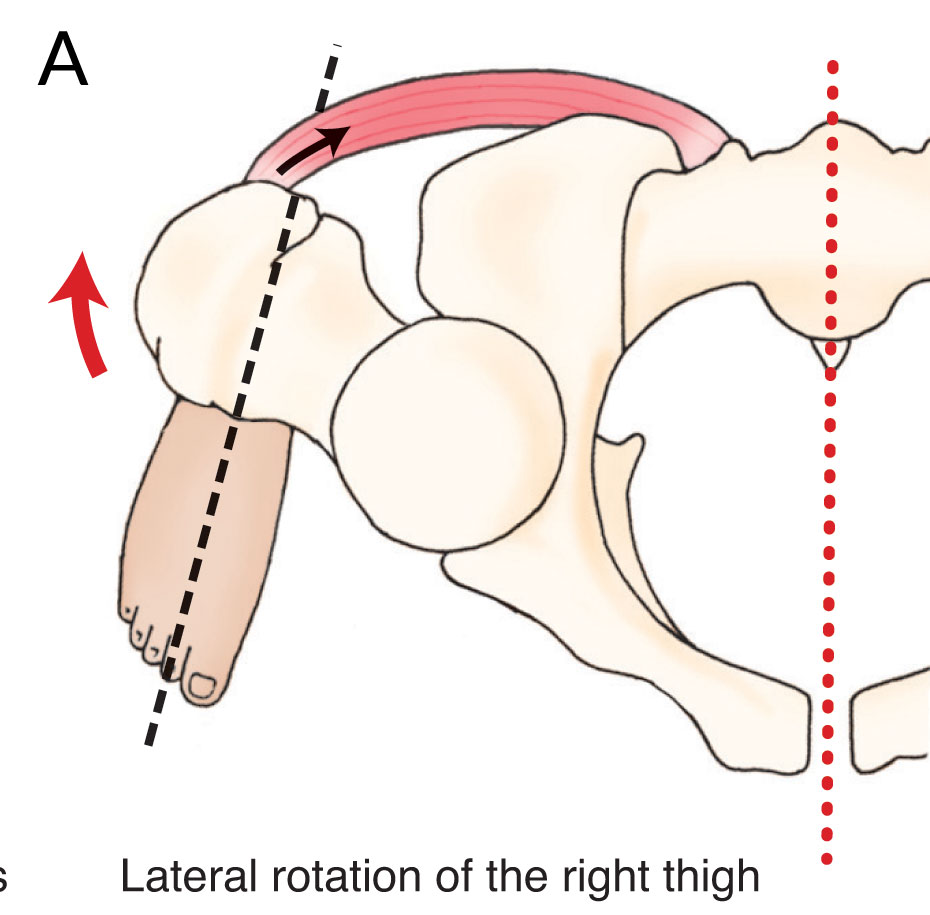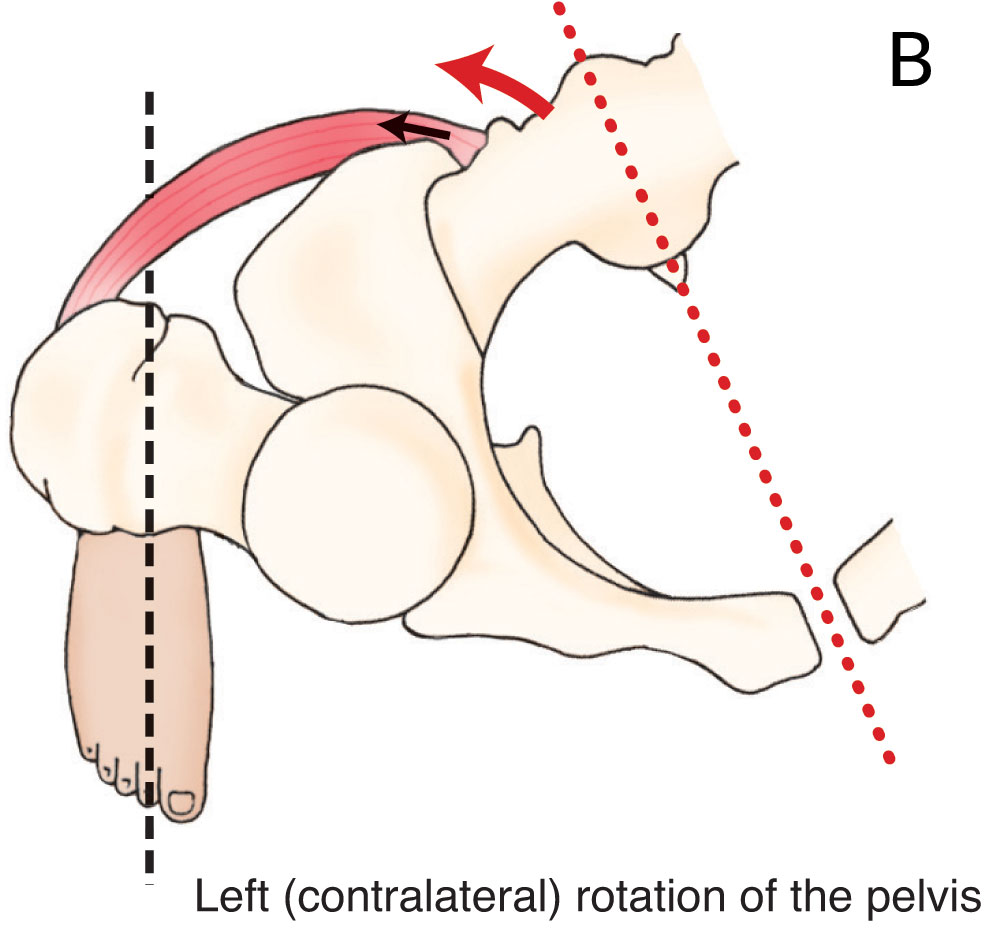Note: This is the fifth blog post article in a series of 11 articles on Psoas Major Function. See below for the other articles in this series on psoas major function.
Within the transverse plane at the hip joint, if the open-chain standard action is lateral rotation of the thigh at the hip joint, the closed-chain reverse action is contralateral rotation of the pelvis at the hip joint (Figure 10) (14, 19).


Figure 10. Transverse plane motion at the hip joint. A, Open-chain lateral rotation of the thigh at the hip joint. B, Closed-chain contralateral rotation of the pelvis at the same-side hip joint. Reproduced with kind permission from Muscolino, J. E., Kinesiology: The Skeletal System and Muscle Function (3rd ed.). 2017. Elsevier.
Transverse Plane: Thigh Lateral Rotation
Within the transverse plane, the function of the psoas major has been claimed to be both medial rotation and lateral rotation. However, it seems that no major source currently describes it as a medial rotator. Tom Myers states that “…most agree that it produces lateral rotation, though arguments can be made (with which this author disagrees) that it could produce medial rotation of the femur.” (16) Gray’s Anatomy states “Electromyographic studies do not support the common view that psoas major acts as a medial rotator of the hip joint…” (29).
Instead, most sources agree that it is a lateral rotator (1, 6, 8, 15, 20, 21, 25, 27, 28, 29, 30). But many of these sources state that its lateral rotation ability is weak (12, 20, 27, 29). Because of its weak rotation ability, Tom Myers describes the psoas major as a “non-rotator.” (16). Basmajian went so far as to say that “The controversy as to whether it is a medial or a lateral rotator should be abandoned because, in fact, it is only weak lateral rotator.” (1). This is backed up by the fact that a number of sources do not even discuss it transverse plane rotation ability (5, 9, 19).
Transverse Plane: Pelvic Contralateral Rotation
Regarding closed-chain transverse plane motion of the pelvis at the hip joint, the line of pull of the psoas major would pull the pelvis into opposite-side (contralateral) rotation at the hip joint (as seen in Figure 10B) if the pelvis were fixed to the trunk as the psoas major contracts (15). (If the pelvis were not fixed to the trunk, then the trunk would contralaterally rotate at the spinal joints as discussed later in this series of blog posts.)
Click here for a list of the cited references.
Note: This is the fifth blog post article in a series of 11 articles on Psoas Major Function.
The 11 articles in the series are:
- Introduction & Muscle Biomechanics
- Biomechanics of the Psoas Major (Overview)
- Psoas Major Hip Joint Actions – Sagittal Plane
- Psoas Major Hip Joint Actions – Frontal Plane
- Psoas Major Hip Joint Actions – Transverse Plane
- Psoas Major Spinal Joint Actions – Frontal and Transverse Planes
- Psoas Major Spinal Joint Actions – Sagittal Plane
- Stabilization of the Spine by the Psoas Major
- Psoas Major and the Sacroiliac Joint
- Psoas Major and Fascial Pulls
- Summary of Psoas Major Function & Further Research
- (References)
Note: This article is modified from an article originally published in the massage therapy journal (mtj): Psoas Major Function: A Biomechanical Examination of the Psoas Major. Spring 2013 issue.


